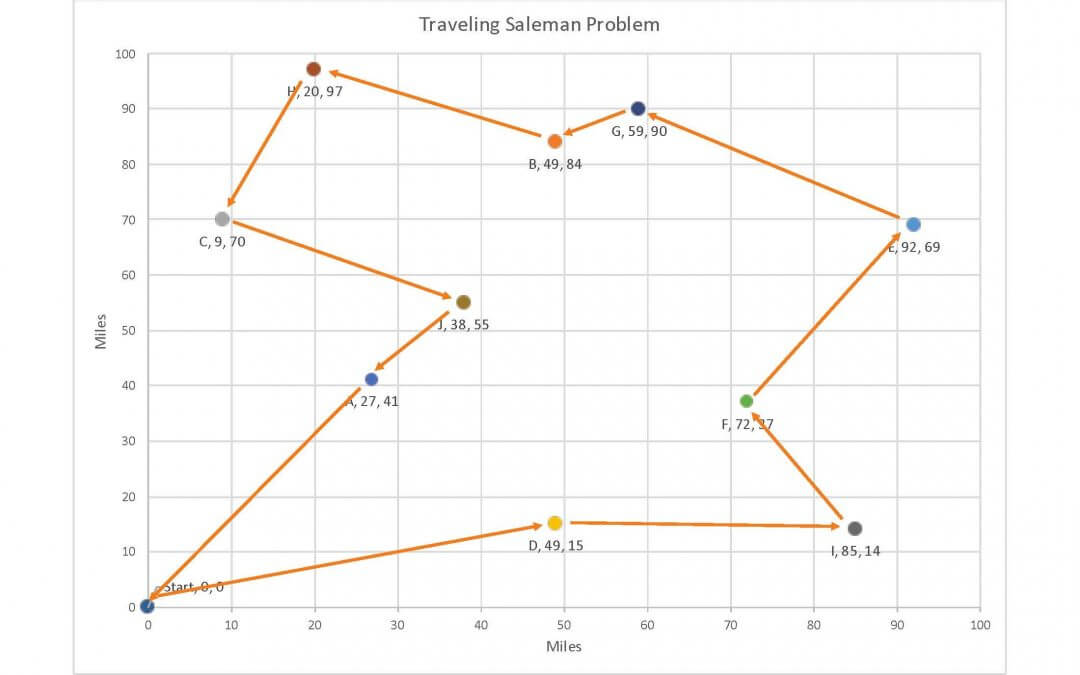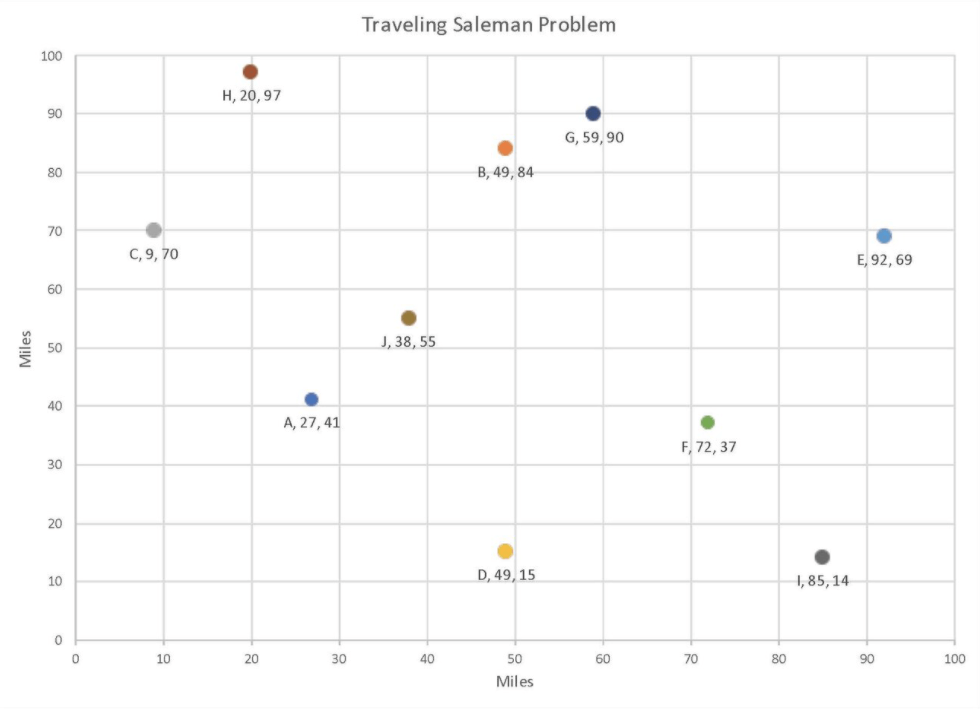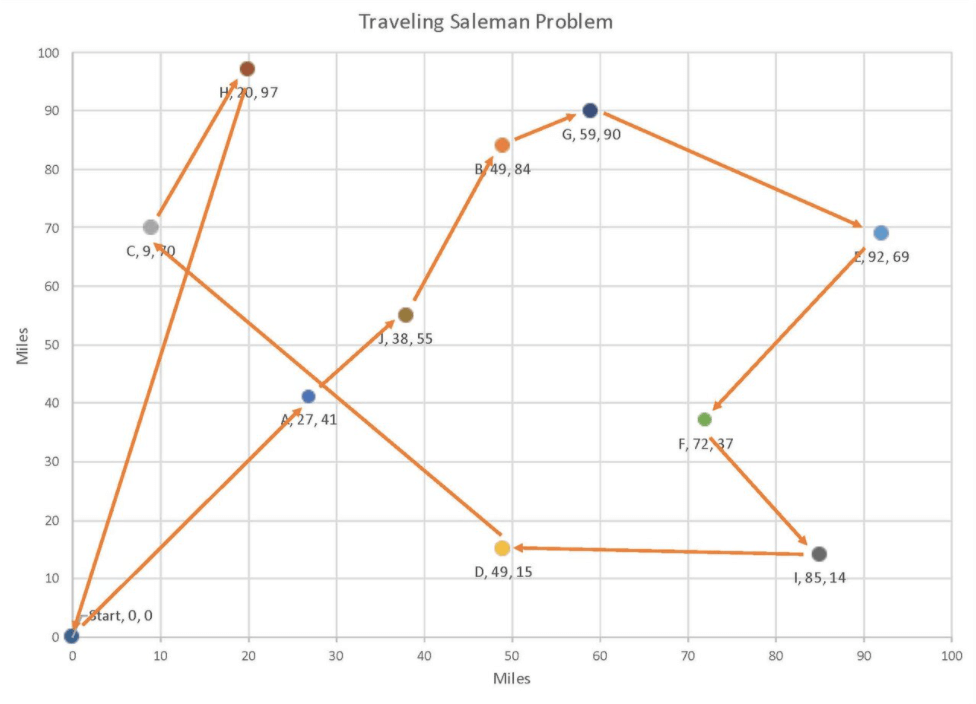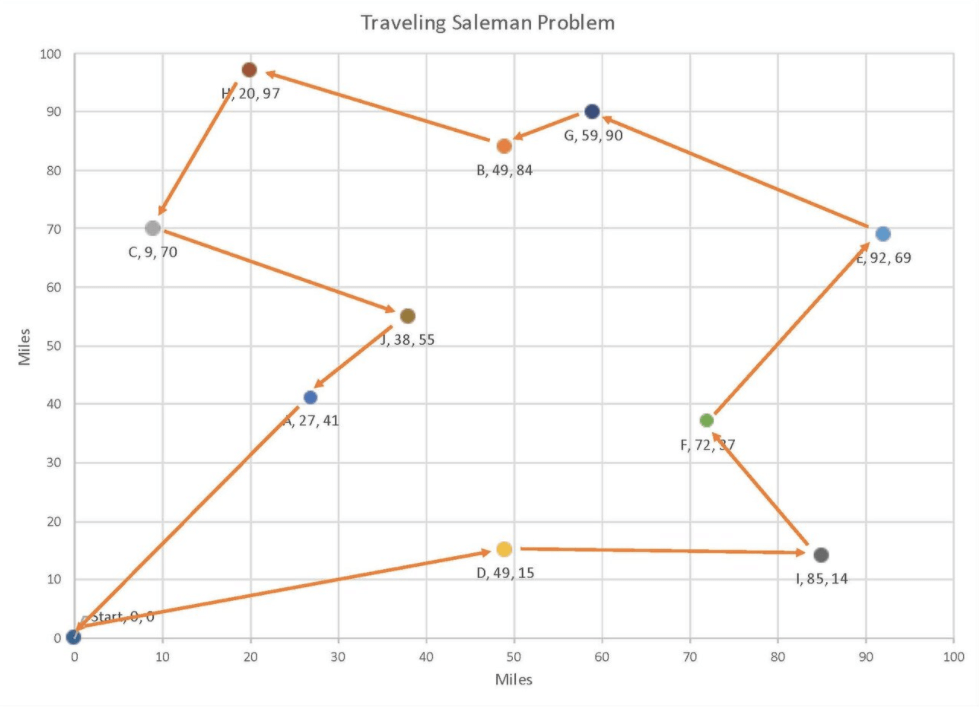Discover the importance of organizational alignment and agility in this blog post. Learn how establishing a strong CORE and building a strategy around it can lead to sustainable growth and success. Find out how alignment and agility empower your organization to thrive in an ever-changing business landscape.

Private Equity, Not Delivering What They Promise?
Private Equity’s financial model, more than any other, defines the Western political landscape. The bankruptcy of Borden this week once more raises the issues of Private Equity and does it deliver what it promises.
What is Private Equity
It is a sizeable unregulated pool of money, who do one of the following:
-
Invest in or buy companies and improve their operations and profits, seeking to sell the company at improved valuation;
-
Invest in or purchase companies and restructure them, trying to recoup gains through dividend pay-outs or later sales of the companies to strategic acquirers or back to the public markets through initial public offerings;
-
who scours the landscape for companies, buy them, and then use extractive techniques such as price gouging or legalized forms of elaborate fraud to generate cash by moving debt and assets like real estate among shell companies;
-
lend money and act as brokers, and are morphing into investment bank-like institutions.
Some are public companies.
PE takes underperforming companies and restructures them, delivering needed innovation for the economy. Also, PE invests in early-stage companies, helping to build new businesses with risky capital. With pools of capital, companies are improvable, and many funds have created successful companies. However, only the small-scale funds do this. There are exceptions to the rule, where PE has built financialized scalable businesses, like chain stores that roll up an industry, i.e. Staples. However, now there is a debate, does PE execute the creative destruction which should lead to better products, services, and companies, or does it just lead to Destruction!
How Did Private Equity Evolve?
Private Equity, as we know it today, was originated by William Simon. Simon is considered one of the most influential American political figures of the 1970s and early 1980s, a brilliant innovator in politics, finance, and how to produce ideas in American politics. Simon was an accountant, a nerd, an apocalyptically oriented conservative financier, who was a bond trader and top executive at Salomon Brothers in the 1960s and 1970s. Simon went into politics in the 1970s, a leader at the Treasury Department under Nixon and Ford. He became the President of the Olin Foundation, the key conservative foundation.
In 1982, Simon became the leader of the financial revolution. He organized the first large scale leveraged buyout, which shocked Wall Street. Simon and his partner acquired Gibson Greeting cards from RCA for $80 million. Using Simon’s political credibility and connections, they invested $330,000 each and borrowed the rest from Barclays Bank and General Electric. Immediately they paid themselves a $900,000 special dividend, made $4 million on the sold the company’s real estate assets, and gave the company’s management 20% of the shares as an incentive grow share value. Eighteen months later, Gibson did an IPO, valuing the company at $270 million. Simon cleared $70 million personally in a year and a half from a $330,000 investment.
Wall Street was amazed, and Gibson became the starting gun for the mergers and acquisitions PE craze of the 1980s. With Wall Street’s love affair with PE, came the consultants. Today, BCG, McKinsey, and many of the other management consulting firms work with PE firms.
The Case For Private Equity
In the 1970s, with an inflationary environment and a growing flood of imports into the U.S., the belief that US businesses were well run collapsed. In 1970, Milton Friedman put forward the shareholder value of the firm, a theory that the only reason for the corporation to exist is to maximize shareholder value. In 1976, Michael Jensen, argued in “Theory of the firm: Managerial behavior, agency costs, and ownership structure,” that leveraging firms would impose fiscal discipline wasteful management; and placing ownership in the hands of a few would force managers to be attentive to the efficient operation of the corporation. Thus Jensen is considered the intellectual patron saint of PE.
With these arguments in place, private equity has long argued that it is releasing tied-up capital into the economy, making firms more efficient, incentivizing management appropriately, and making the US economy more efficient.
The Case Against Private Equity
Toys “R” Us is a current example of what PE does. In 2005 a group of PE firms acquired Toys “R” Us through a very leveraged acquisition. By 2007, while still immensely popular, Toys “R” Us was spending 97% of its operating profits on debt service. While the PE firms owned Toys “R” Us, they were not responsible for the loans or the companies pensions. Also, Toys “R” Us would pay fees to the PE firms of $500 million. Between debt service and fees, there was no money left. The company stopped innovating, maintaining its stores, and started cutting costs aggressively so it could continue making the debt and fee payments.
In 2017, the company went under, liquidating all its stores and firing all its workers without severance. What destroyed the company was financiers and public policies that allowed the divorcing of ownership from responsibility.
The management consulting companies today work with PE firms, not to innovate products and services, but provide methods for legal arbitrage and price gouging. If a certain kind of price gouging strategy worked in a pharmaceutical company, a private equity company could roll through the industry, buying up every possible candidate and quickly forcing the price gouging everywhere.
As conceived, private equity was about getting rid of the slack, which allowed American managers had to look out for the long-term, fund research, and experiment with production techniques. PE replaced slack with staggering debt schedules providing and massive upside for higher stock prices, and no downside for the owner-financiers should the company fail. The goal has become to eliminate production in favor of scalable, profitable things like brands, patents, and tax loopholes, because producers – engineers, artists, workers – are cost centers. By moving production offshore to lower-cost countries, production is eliminated. There are stories of how PE took apart factories in the midwest and shipped them to China.
Borden, which declared bankruptcy this week, is relying on monies earmarked for employee pension to survive as it staggers under the debt load and fee commits of PE.
So what is the evidence?
The 2010s have been the Decade of Private Equity
The 2010s have been characterized by:
-
corporate mergers;
-
aggressive activist investors;
-
out-of-control CEO pay;
-
maximizing shareholder value; and
-
awash in private equity deals.
While private equity (PE) deals have been part of the financial landscape for decades and some of the biggest PE deals on record — TXU Energy, First Data, Chrysler, Alltel, Hilton Worldwide — took place in the frothy years before the 2008 financial crisis.
However, what changed in the 2010s was less the size of the deals as their proliferation. In 2009, private equity firms completed 1,927 transactions worth $142 billion, according to the financial data firm Pitchbook. By 2018, there were 5,180 PE deals worth $727 billion.
Why so many deals? The main reason is with all the capital injected into the system by QE and its progeny; most PE firms are holding more capital than they know what to do with. According to Bain & Co., private equity firms have an astonishing $2 trillion in “dry powder” that they need to deploy. The second reason is that there are fewer big deals available, so firms have had to move downmarket to find companies willing to be bought out. The majority of the transactions in the past few years have been for less than $500 million.
This private equity gold rush is on, fueled by cheap debt and enthusiastic investors. A lawn care chain might get half a dozen calls and emails a week from business brokers and “searchers.” A regional bank auctioning off a business with $15 million in profits might pitch two hundred prospects, receive fifty letters of intent, and take twelve separate private equity firms to management meetings, ending in a sale price that the majority of bidders considers crazy. And the most fabulous prize of all—a software company—could sell for many multiples of revenue, regardless of profitability.
A recent survey of institutional investors found that:
-
49% expect private equity to outperform the public equity market by an incredible 4 percent p.a.
-
45% believe PE will outperform by 2–4 percent p.a.
-
6% think returns will be comparable.
The survey didn’t ask if investors thought PE might underperform, which is stunning given that data from Cambridge Associates shows that private equity returns have lagged the Russell 2000 index by 1% and the S&P 500 by 1.5% per year over the past five years. As a result, institutional investors have flooded private markets with capital, about $200 billion p.a. of new commitments. The result is soaring prices for private companies of all shapes and sizes.
What makes this dangerous is:
- Debt. The average PE deal is 65 percent debt-financed. This level of leverage provides companies with no margin of safety. Most companies’ cash flows are too volatile and unpredictable to sustain high debt levels for long. Also, the recent tax reform caps interest deductibility at 30 percent of EBITDA, which for most firms translates to about 5x EBITDA of debt. In any downturn, when EBITDA declines, these firms will struggle to survive.
- False accounting to conceal the riskiness of these leveraged bets. While transparent, liquid, public markets determine valuations of public equities, PE firms determine the value of their own portfolio companies. Unsurprisingly, they report far lower volatility than public markets.
The three premises that underlie the current private equity boom are:
- PE firms make money by improving the companies they buy;
- PE is less volatile and less risky than public equity; and
- PE will significantly outperform every other investment.
There is near complete consensus on these three points among academics, investors, and PE firms.
PE firms relentlessly promote the idea that they can restructure companies and orient them toward long-term growth rather than short-term results. Is that the case, and what does the data show?
Do Private Equity Firms Improve Companies’ Operations?
Daniel Rasmussen, a private equity skeptic, studied to see the effect private equity firms had on the companies they bought. Using a database of 390 deals with more than $700 billion in enterprise value, he examined these three premises to see if data supported them.
Rasmussen found:
-
54% had slowing revenue growth;
-
45% had contracting margins; and
-
55% showed Capex spending as a percentage of sales declining.
In 70% of deals, PE firms are leveraging up the businesses they buy. PE firms typically double the amount of debt on the balance sheet, from 2.5x EBITDA to 5x EBITDA. The increased level of debt imposes repayment costs on the company while the PE firms pulled out fees and dividends that had no bearing on what the PE firm has achieved in terms of improved performance. Not all debt is bad; there is an optimal capital structure for every company that maximizes the value of the interest tax shield while minimizing the risks of financial distress. The majority of private companies have too little leverage. While the effective use of debt was key to private equity’s past success, debt is a double-edged sword. If used judiciously, it can provide significant benefits; however, if applied in large chunks regardless of the underlying company, it can create massive problems. The result – bankruptcy. Some of the significant bankruptcies of the 2010s were:
-
Toys “R” Us;
-
Chrysler;
-
Gymboree;
-
Sports Authority; and
-
Linens ’n Things.
When the Limited announced it was shutting down its 250 stores in 2017, throwing its employees out of work, Sun Capital Partners Inc., its owner, reported that it had nearly doubled its money, thanks to the dividends and fees it had paid itself.
Thus most private equity firms, by increasing leverage, are cutting long-term investments, not increasing them, resulting in slower growth, not faster growth.
In addition to Rasmussen’s study, a 2013 survey of 317 LBOs by researchers at the University of Texas found “little evidence of operatin
g improvements subsequent to an LBO. . . . Our results suggest that effecting a sustained change in capital structure is a conscious objective of the LBO structure.” Also, Bain & Company’s 2017 global private equity report came to similar conclusions. Bain compared deal model forecasts for revenue and EBITDA with the results for PE deals in their proprietary database. More than two-thirds of the time, PE deals never realized the EBITDA forecasts made at the time of purchase. However, this underperformance didn’t affect investors, as almost two turns of multiple expansion at sale sheltered them. As Bain wrote, “GPs [private equity fund managers] were lucky to make up the shortfall in margin expansion through unforeseen multiple expansion.” A paper by Brian Ayash and Mahdi Rastad in 2019 noted that companies bought by private equity are ten times more likely than comparable companies to go bankrupt.
Rasmussen claimed is a new paradigm for understanding the PE model is, “As an industry, PE firms take control of businesses to increase debt and redirect spending from capital expenditures and other forms of investment toward paying down that debt. As a result, or in tandem, the growth of the business slows. That is a simple, structural change, not a grand shift in strategy or a change that requires any expertise in management.”
Matt Stoller noted, “The goal in PE isn’t to create or to make a company more efficient, it is to find legal loopholes that allow the organizers of the fund to maximize their return and shift the risk to someone else, as quickly as possible.”
In other words, whatever rationale private equity might have once had, the 2010s exposed an industry that cared about lining its own pockets — often at the expense of the companies it bought. It has become dealmaking for its own sake.
Does Private Equity Offer Lower Risk?
Risk and return are generally related, and financial products that offer high returns at low risk are likely to deliver on neither promise. Due to “loss aversion,” humans are twice as sensitive to losses as they are to gains. Since the public equity markets are very volatile, loss aversion doesn’t do well in that environment.
PE firms, using their own employee “Experts,” rather than the public markets, determine the prices of their portfolio companies. Predictably, volatility is dramatically lower volatility. The judgment of a valuation firm employed by the PE firm replaces the chaos of the public markets. Think back to the rating firms and CDOs of the 2000s to reflect how well this works out!
To put this difference in valuation to context, consider the 50+% drop in energy prices in 2014 and 2015. The S&P 600 Energy Index dropped 52 percent during the period from December 31, 2012, to September 30, 2015. Yet as of September 30, 2015, PE energy funds valuations were:
-
2011 vintage – marked up on average to 1.1x multiple of money invested (MoM)
-
2012 vintage – marked at 1.0x MoM; and
-
2013 vintage – marked at 0.8x MoM.
Thus, PE energy funds almost universally claimed to have dramatically outperformed the public equity market, not even recognizing half of the losses exhibited in public markets.
Institutional investors value these “smoothing effects”; however, some investors refer to this as the “phony happiness” of private equity.
In a recent paper, George Washington University professor Kyle Welch argues that portfolio managers “have incentives to obfuscate systematic risk and to choose investments that appear low-risk.” If PE firms adopted fair value accounting standards, Welch showed the reported volatility of private equity would double. The PE secondary market provides examples of this increased volatility.
Some PE investors argue this smoothing is ok if everything comes out right in the end. To the extent that things do come out right in the end, reducing some volatility along the way is not so problematic. However, not seeing the actual situation encourages complacency, allowing valuations and leverage levels to climb because the consequences of those decisions are unrealized. A lack of short-term accountability means a delayed reckoning, with all the chips coming due down the road. And there are warning signs that all might not end up so well.
Does Private Equity Offer the Best Returns?
In the long run, private equity has performed well. From 1990 to 2010, PE returned 14.4% p.a., compared to 8.1% per year for the S&P 500 index. This 6.3% outperformance was net of fees, implying that the gross returns were more like 20% p.a.
However, past performance is a far worse predictor of future returns than prices. With increased capital, the prices paid for PE assets have increased. In 2007, the average purchase price for a PE deal was 8.9x EBITDA. Deal prices reached 8.9x again in 2013 and are now nearing 11x EBITDA. Private market valuations have been equal to or greater than public market valuations since 2010. As noted above, since 2010, private equity has, on average, underperformed the public equity market. Like all assets classes, arbitrage disappears as more people seek it.
The relative performance of private equity is contingent on size, leverage, and valuation. An analysis by the Canadian Pension Plan Investment Board (CPPIB) and the Abu Dhabi Investment Authority (ADIA) of 3,492 private equity transactions from 1993 to 2014 found that private equity deals are different on two key quantitative dimensions from public equity investments.
- PE firms acquire companies that are significantly smaller than broader public benchmarks. The median market capitalization of a company in the S&P 500 and Russell 2000 is $41 billion and $2 billion, respectively. However, the median enterprise value of PE deals is only $250 million. Only about fifteen private equity investments have ever been larger than the maximum market capitalization of the small-cap index.
- PE deals are significantly more levered than typical public equity. The CPPIB and ADIA found that the average ratio of net debt to enterprise value at inception has been approximately 65 percent. The typical Russell 2000 small-cap company is levered at about 16 percent while the median large-cap company in the S&P 500 has 18% leveraged.
These two factors have been constant since the early 1980s. Differences in size and leverage explain only about 50 percent of private equity’s historical outperformance of public equity markets. What has changed is valuation. Private equity firms have historically bought companies at much lower valuations than the broader public markets.
With the increase in prices, transactions require more debt, increasing interest costs, and the risk of bankruptcy. The effect of increased acquisition costs can be looked at as follows:
-
Analysis by a PE firm found that over half of deals done at valuations of more than 10x EBITDA lost money and that the aggregate MoM was barely over 1.0x (i.e., for every dollar invested, only slightly more than one dollar was returned to investors).
-
Comparing the average purchase multiple in a given year to the returns of the funds from that vintage year. There is a –69 percent correlation between the purchase price and vintage year return, a strong inverse relationship.
-
Examing PE-backed companies that IPO, Rasmussen’s data showed the cheaper IPOs dramatically outperformed the Russell 2000, the moderately priced IPOs matched the Russell 2000’s return, and the expensive IPOs underperformed.
-
According to Preqin, PE executives said their biggest challenge was valuations (their second most significant challenge, worrisomely, was the “exit environment”). Joe Baratta, Blackstone’s global head of private equity, said “this is the most difficult period we’ve ever experienced. . . . You have historically high multiples of cash flows, low yields. I’ve never seen it in my career. It’s the most treacherous moment.” Regardless, Blackstone Capital Partners VII raised $18 billion in 2015, its largest fund
PE companies paying high prices for targets and using debt to fund the purchase appears to look like a bad strategy. In Rasmussen’s view, 2015, 2016, and 2017 vintage years are likely to return close to zero percent per year if history is a guide.
Conclusion
The evidence shows that PE firms are just adding debt: the supposed improvement in incentives and managerial alignment is more marketing than substance. While debt can have a disciplining effect and can enhance returns on suitable investments, the amount of debt being used in most PE transactions today is excessive. Also, debt reduces a company’s long-term capital flexibility. The “discipline of debt” and “long-term thinking” are mutually exclusive goals. Finally, it is ironic that the same PE firms making these arguments—Blackstone, KKR, Apollo—have themselves gone public.
There are two outcomes for all of this:
- Collapse – When the business cycle finally turns, the consequences for the thousands of companies carrying private equity debt are likely to be severe. The debt loads are more oppressive and not sustainable, especially if the companies sacrificed growth for debt service.
- Political – if the Democrats take the Senate or the presidency — or both — the private equity model is going to be under attack. Elizabeth Warren has already put forth a proposal to rein in private equity — the “Stop Wall Street Looting Act.” Among other things, it would give workers rights when bankruptcy takes place and would put private equity firms “on the hook for the debts of companies they buy.”
In this decade of growing income inequality, nothing symbolized the gap between the haves and the have-nots like private equity. When it can walk away enriched while companies it owns go bankrupt — is that the way capitalism is supposed to work? This failure of capitalism results in more considerable resentment in the population. Of course, the carried interest benefit does nothing to mitigate the complaint.
Thus, politicians on both sides of the aisle are seeking to restructure PE and effectively the philosophy of the American political economy by returning to excellence in production, l instead of excellence in manipulation. However, this a huge task with many monied and powerful vested interests. When the Obama administration talked of removing the carried interest loophole, Steve Schwarzman at Blackstone compared such a plan to “The Invasion of Poland by Germany in 1939.” While Donald Trump ran on removing the carried interest loophole, the Tax Cuts and Jobs Act of 2017 left it untouched. According to the President, there was no interest in changing it.
While I’ll admit that I’m rooting for private equity to get a comeuppance similar to the one that took place in tech after the Nasdaq decade, I am concerned that the price inflicted on the PE investors will be minor compared to the damage inflicted on the overall economy, workers, and companies that never had a stake in the upside. However, I am sure that if there is a comeuppance, PE will not take the blame.
Copyright (c) 2020, Marc Borrelli
Recent Posts
Align and Thrive: The Importance of Organizational Alignment and Agility
How to Achieve Smart Time Management: 10 Tips for Busy Professionals
When you are a busy professional running your own business, it can often feel like there aren’t enough hours in the day to accomplish everything. Being strategic with your time is the best (and possibly the only) way to achieve all of your daily tasks. If you are...
5 Strategic Leadership Skills Every Manager Needs
So often, people view leadership as a talent: you’re either born with this quality or you’re not. However, this is not always the case! In reality, good leadership is made up of skills, and anyone can learn how to improve. Some people may pick up leadership attributes...
How the Sellability Score is Calculated: The Ultimate Guide
Do you have questions about how to calculate your business’s sellability score? Whether you’re looking to sell your business in the near future or years from now, understanding your sellability score will help you thrive. The sellability score identifies the...
The Top 5 Benefits of the Entrepreneurial Operating System
As an entrepreneur running your own business, you know there are bumps in the road and struggles that both you and your business will face over time. However, with the right people and tools at your disposal, you can anticipate what’s coming, plan for it, and continue...
5 Ways to Use Email Automation to Boost Traffic
Every single business in the world wants to evolve and grow. This will happen using a variety of techniques and strategies. In 2022, digital marketing is more than a household name, and most companies will adopt at least a few ideas when long-term planning and coming...
6 Questions To Ask A Potential Business Coach Before Hiring Them
Many entrepreneurs consider executive business coaching when they start struggling on their professional path. A small business coach is an experienced professional mentor who educates, supports, and motivates entrepreneurs. They will listen to your concerns, assess...
3 Ways Proper Long Term Strategic Planning Helps Your Business
Dreams turn into goals when they have a foundation of long-term strategic planning supporting them. They become reality when the ensuing strategic implementation plan is executed properly. With Kaizen Solutions as their strategic planning consultant, small and...
What is a Peer Group, and How Can it Improve Your Career?
If you are a CEO or key executive who has come to a crossroads or crisis in your career, you'll gain valuable insights and solutions from a peer group connection more than anywhere else. But what is a peer group, and how can that statement be made with so much...
Profit and Revenue are Lousy Core Values
As I mentioned last week, I am down with COVID and tired, so spending more time reading rather than working. I read Bill Browder's Freezing Order this weekend, and I highly recommend it. However, at the end of the book, Browder says that oligarchs, autocrats, and...













